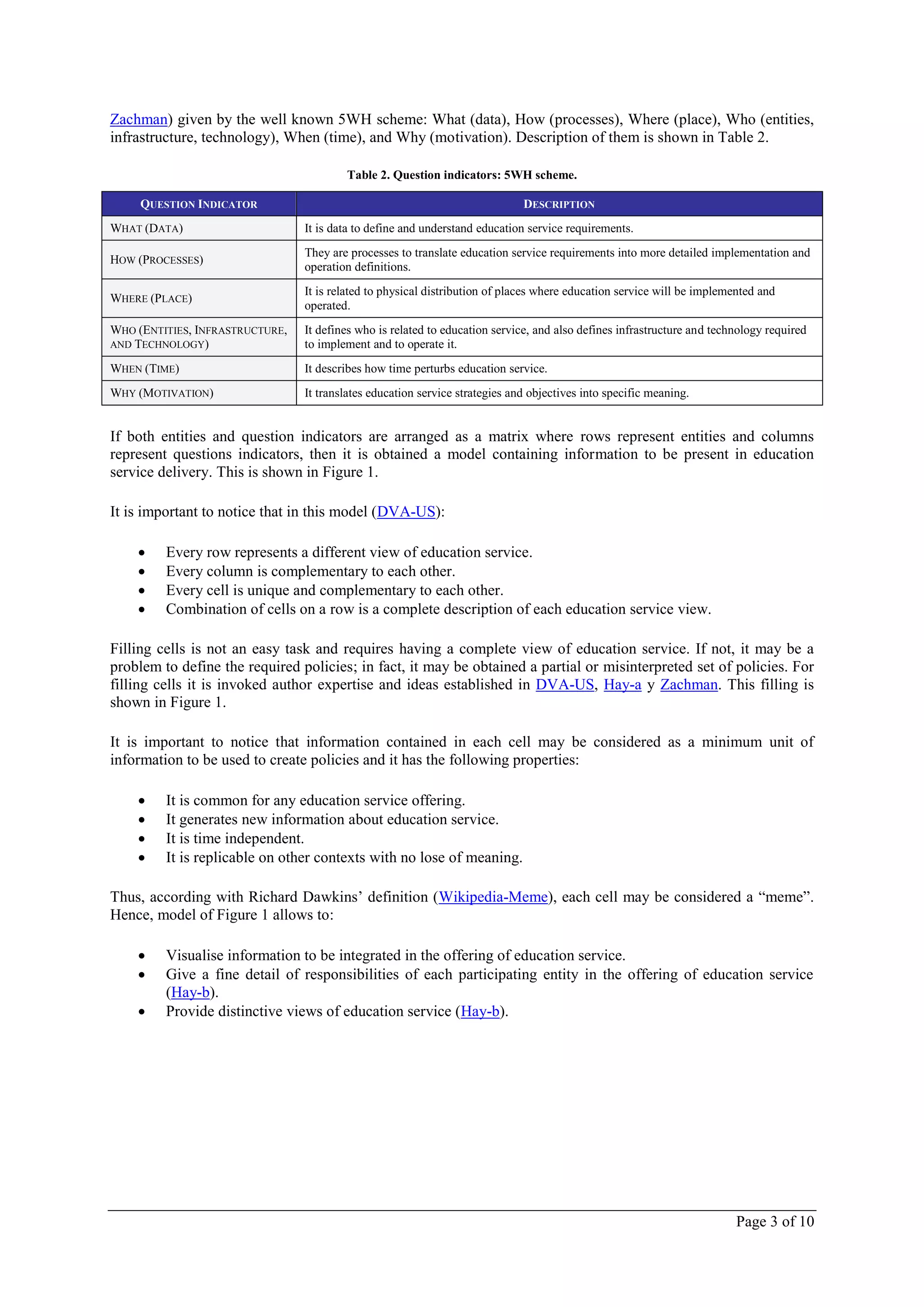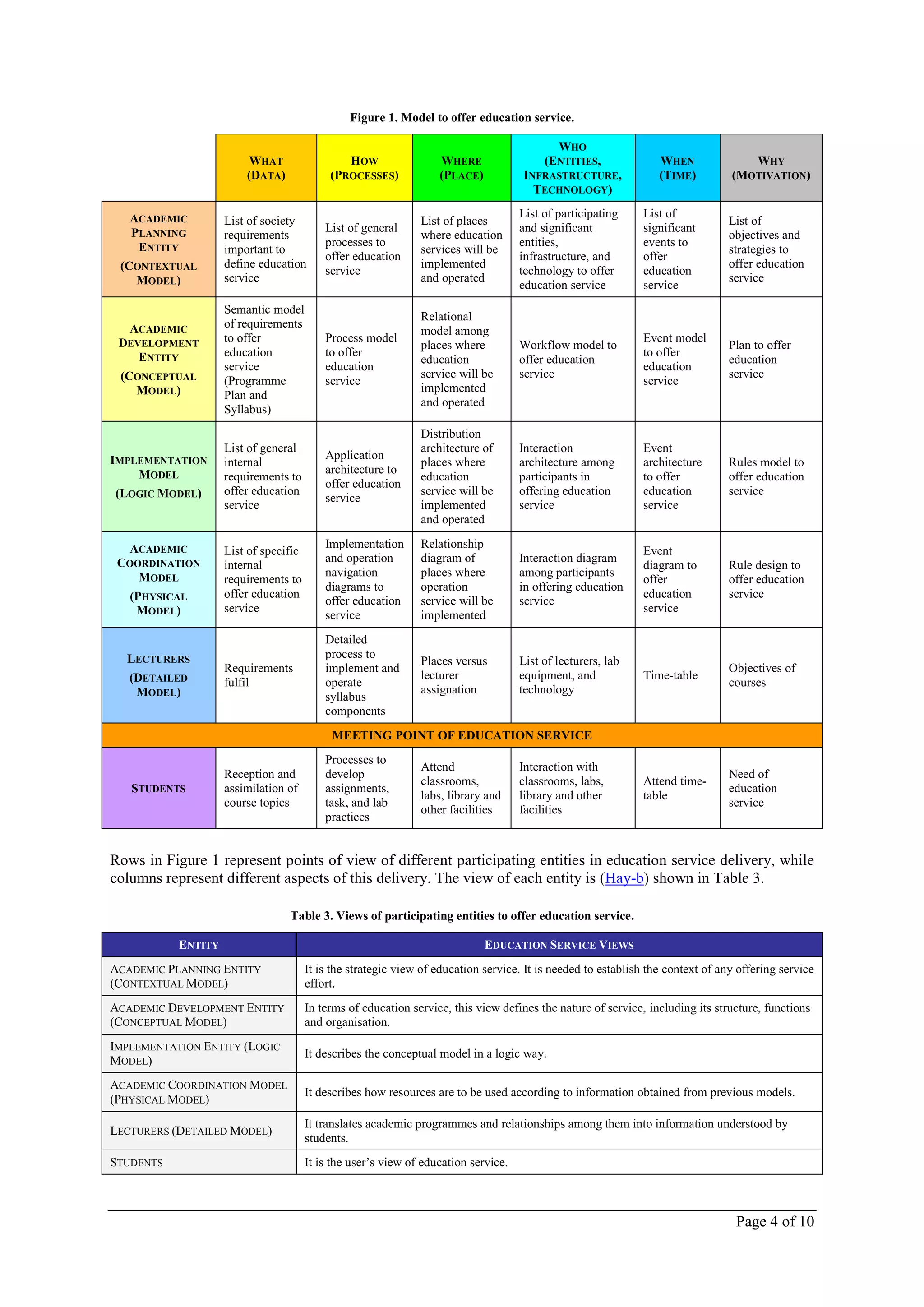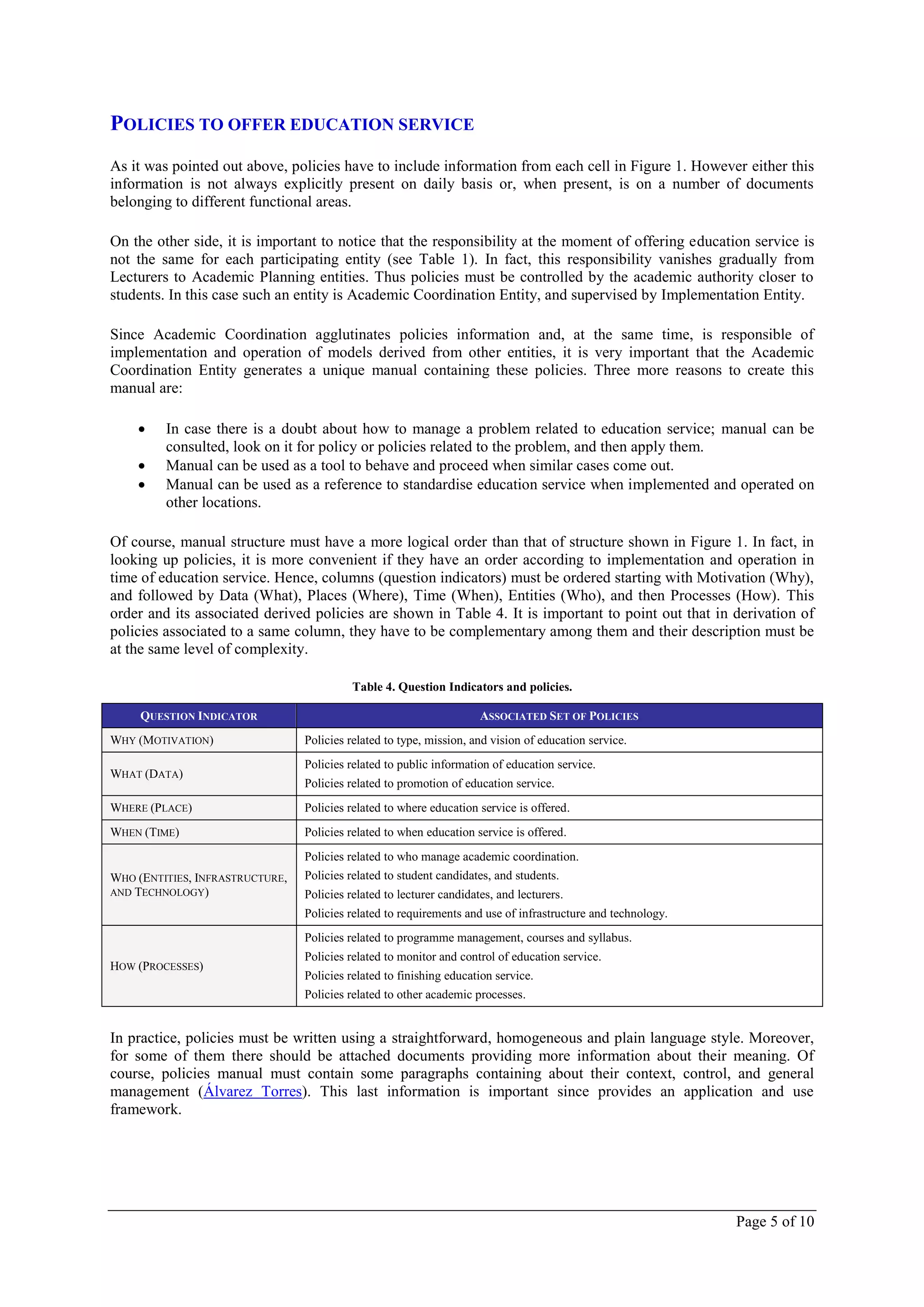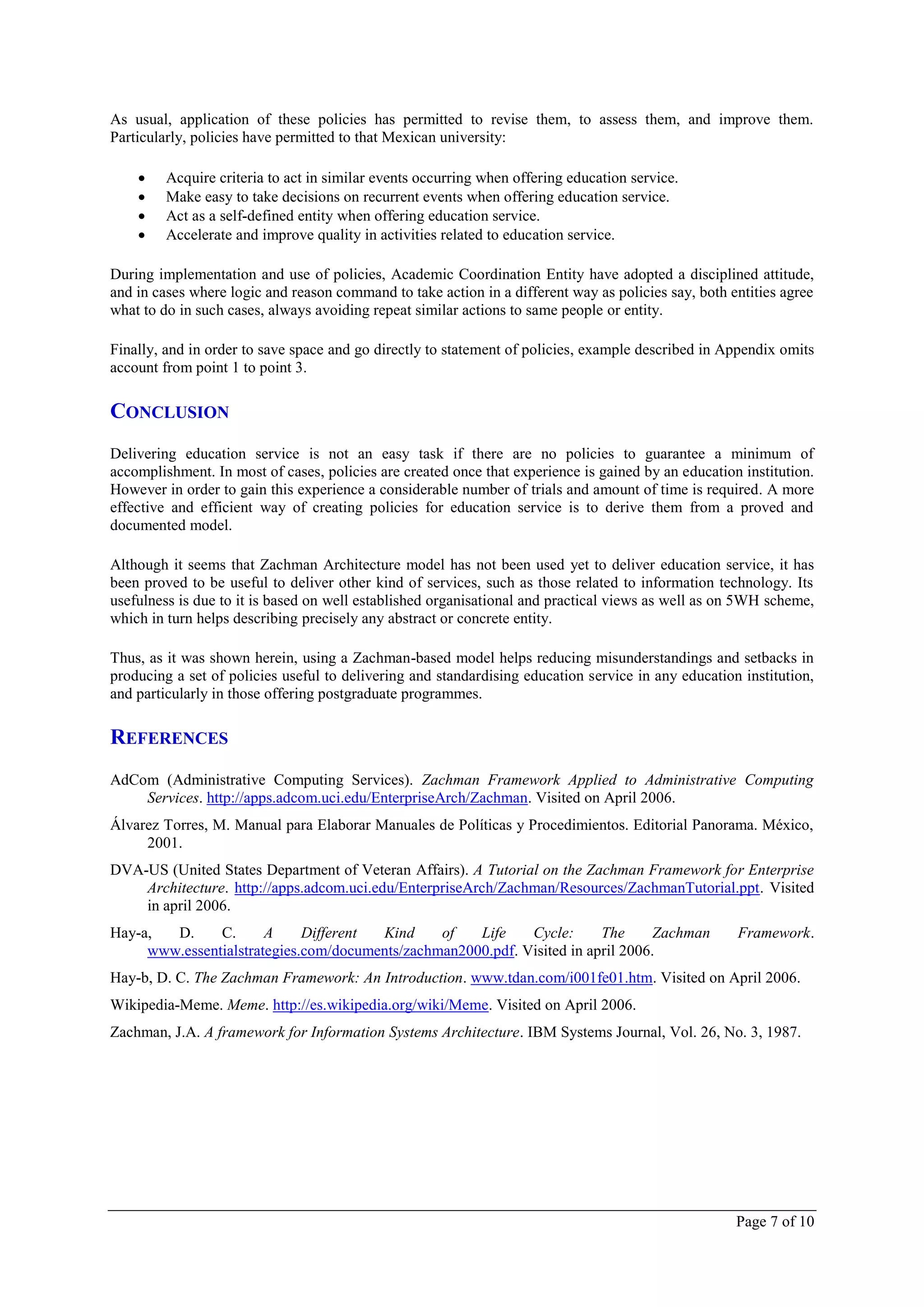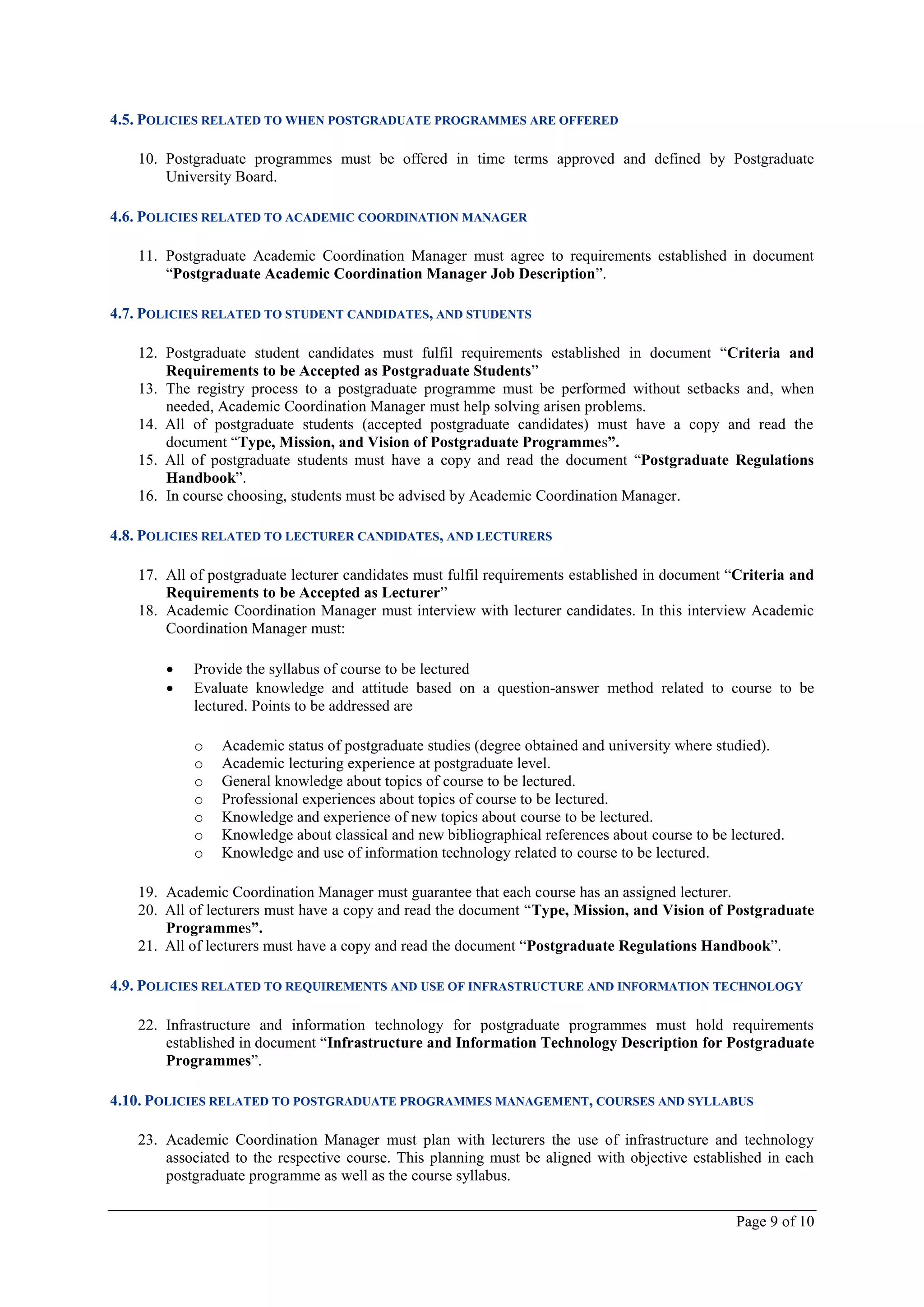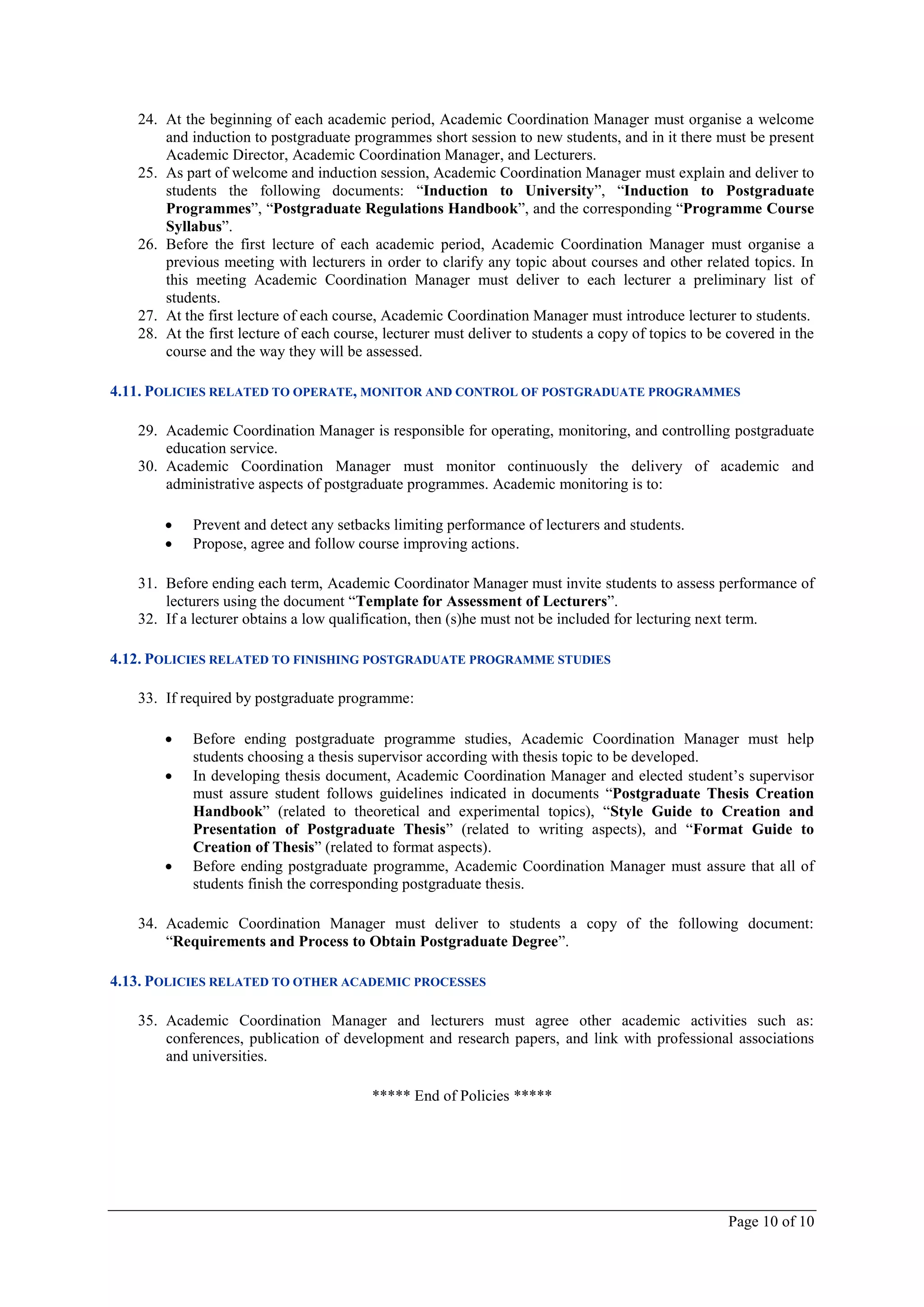The document discusses using the Zachman framework to develop a model and policies for delivering education services. It begins by identifying key entities involved in education services and the questions (what, how, where, who, when, why) that need to be addressed for each entity. The entities and questions are combined into a Zachman matrix that provides different perspectives on education services. Each cell in the matrix represents important information ("memes") for developing policies. The document then outlines a set of policies organized by the questions to standardize education service delivery. The policies are intended to help the institution navigate from initial requirements to satisfying student expectations and accreditation standards.


